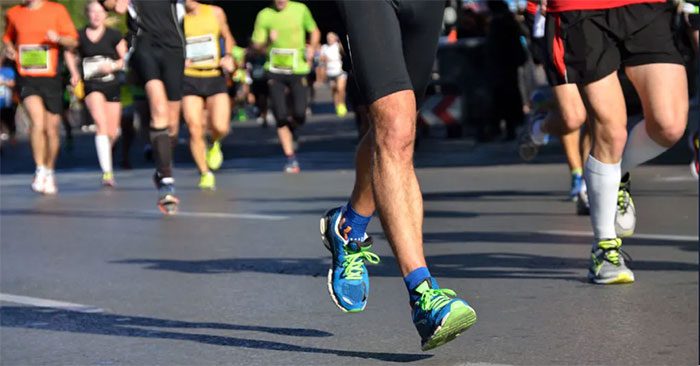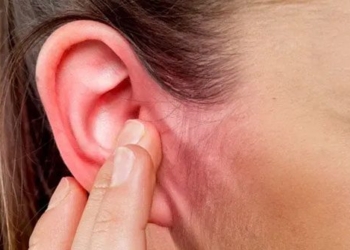Duck Foot Syndrome can lead to decreased performance in runners and increase the risk of injuries due to its impact on ligaments and joints during movement.
Duck Foot Syndrome is a type of torsional deformity that typically occurs when one of the two longest bones in the leg, the tibia and femur, rotates outward, causing the foot to point away from the body instead of straight ahead. This condition is in contrast to a more common torsional deformity known as pigeon toe, where the foot turns inward.
Duck foot can occur in one or both feet. In many young children, this condition is often temporary and short-lived during the walking phase but can persist into adolescence or sometimes even adulthood. Flat feet can also contribute to the development of duck foot.
In adults, the condition can be assessed by standing naturally with feet about 30 cm apart. Looking down at the position of the toes, if they point outward instead of straight ahead, you are likely experiencing duck foot. Alternatively, you can lie on your back on a flat surface and check if your feet rotate outward along with your knees.
 Duck Foot Syndrome causes the foot to point outward instead of straight ahead. (Photo: Run Smart Online)
Duck Foot Syndrome causes the foot to point outward instead of straight ahead. (Photo: Run Smart Online)
There are several common causes of outward-facing feet in children, including: a family history of duck foot, the position of the fetus in the womb before birth, foot positioning during infancy, and flat feet.
In adults, Duck Foot Syndrome may result from injuries to the legs, hips, ankles, or feet, muscle strains in the legs or hips, poor posture, or a sedentary lifestyle leading to anterior pelvic tilt or forward pelvic alignment. Anterior pelvic tilt tightens the hip muscles, causing the femur to rotate outward and potentially leading to duck foot.
Duck Foot Syndrome can be mild and often does not cause pain or discomfort and usually does not hinder the ability to walk, run, or move. However, if the condition is severe and causes pain or imbalance, it is important to consult a doctor for evaluation and treatment.
Our bodies are designed around a simple structural support system that distributes force around the joints. The joints serve to support and facilitate flexible movement. However, having both feet pointing outward affects that joint function. During movement, the force is transmitted through the midfoot instead of the ankle joint, increasing strain on the feet and knees.
In individuals with Duck Foot Syndrome, the outward rotation of the tibia and femur also means that the anterior and posterior cruciate ligaments inside the knee are stretched during movement. Continuous stretching can lead to ligament tears or complete ruptures.
As a result, individuals with Duck Foot Syndrome are more prone to tibial stress syndrome (MTSS or shin splints), plantar fasciitis, or medial knee pain. When the outward foot position becomes severe and uncontrolled, it can lead to other conditions such as: muscle atrophy in the calves and glutes, knee injuries, ankle injuries, flat feet, leg pain, and piriformis muscle damage (a small muscle deep in the buttocks), which can lead to sciatica.
In addition to being prone to injuries, Duck Foot Syndrome also reduces performance in runners, causing them to run slower as the outward foot position diminishes the body’s propulsion during movement.
Mild Duck Foot Syndrome can often be managed with home treatment. First, pay closer attention to foot placement when walking or standing, trying to align the feet straight ahead.
Orthotic inserts can be used to support and elevate the foot arch. They will help stabilize the heel and improve alignment.
Stretching exercises for the hamstrings and hips are also beneficial for individuals with mild Duck Foot Syndrome.
Here are some easy stretching methods you can try at home.
Wall Stretch: Place a footstool or a few thick books about 60 cm away from the wall. Stand on the footstool, but let your heels drop off the back edge. Position your foot arch on the stool while keeping your heels off. Extend both arms and lean against the wall for support. Raise and lower your foot, alternating to stretch the foot and calf.
Tennis Ball: Sit on the floor with your legs extended in front of you. Place a tennis ball under your calf and roll it back and forth for about 2 minutes. Increase the stretch by flexing your foot while continuing to roll the ball. Repeat with the other leg. Do this several times a day.
Piriformis Stretch: Lie on your back and bend your knees so that both feet are flat on the floor, hip-width apart. Cross one leg over the other with the ankle resting on the thigh just above the knee. Gently press down with the ankle and hold for 60 seconds. You should feel a gentle stretch throughout the thigh, hip, and lower back. Repeat on the other side.
If you have Duck Foot Syndrome and experience pain, discomfort, or reduced activity levels, consult a doctor for evaluation. A medical professional can determine whether your condition is due to muscle strain or the outward rotation of the tibia or femur. This can help identify which exercises are most effective.
If bone deformities or femoral condyle fractures are detected, the doctor may recommend surgery.





















































